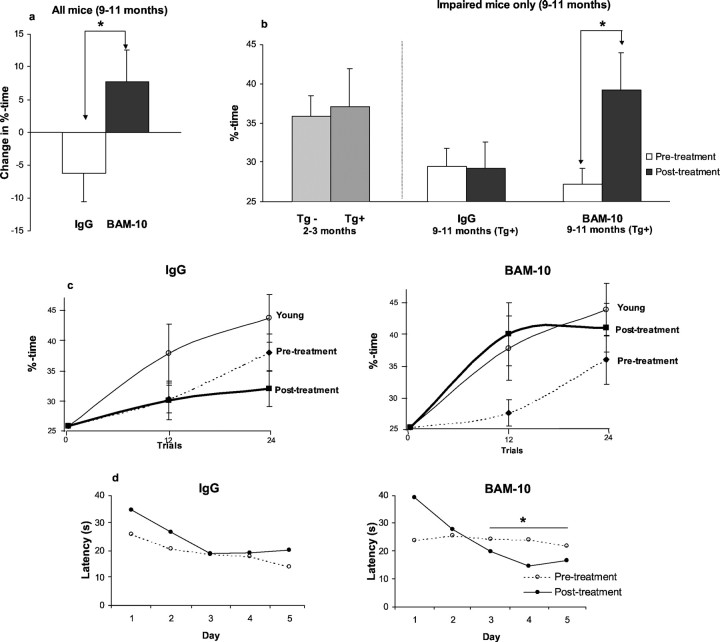Fig. 2.
Spatial reference learning and memory in 9- to 11-month-old Tg2576 mice before and after treatment with BAM-10 antibody. The change in retention of spatial memory occurring as a result of receiving BAM-10 or IgG antibodies intraperitoneally was measured by subtracting baseline scores from post-treatment scores to obtain the change in percentage of time spent in the target quadrant (Change in %-time).a, Mice 9–11 months of age receiving BAM-10 antibody showed significantly greater improvement than mice receiving nonspecific IgG (*p = 0.03 by ttest; IgG, n = 17; BAM-10, n = 16). b, In mice that were impaired at baseline (<40% of the time spent in the target quadrant), those receiving BAM-10 antibody also showed significantly greater improvement than those receiving nonspecific IgG (*p = 0.04 by two-way ANOVA with repeated measures; IgG, n = 13; BAM-10,n = 14). Post-treatment performance of impaired mice receiving BAM-10 antibody was significantly higher than baseline performance (*p = 0.01 by paired ttest) and was similar to that of 2-month-old Tg2576 mice (n = 17) and 3-month-old nontransgenic littermates (n = 10). c, BAM-10, but not nonspecific IgG, restored the retention learning curve of 9- to 11-month-old Tg2576 mice to resemble that of 2-month-old (Young) Tg2576 mice. d, Acquisition of spatial reference memory improved in impaired mice receiving BAM-10 antibody, with significantly reduced mean escape latencies on days 3–5 (*p = 0.04 by paired t test), but not in mice receiving nonspecific IgG. There was a significant treatment-by-training session (baseline vs post-treatment) interaction (p = 0.03 by two-way ANOVA with repeated measures).

